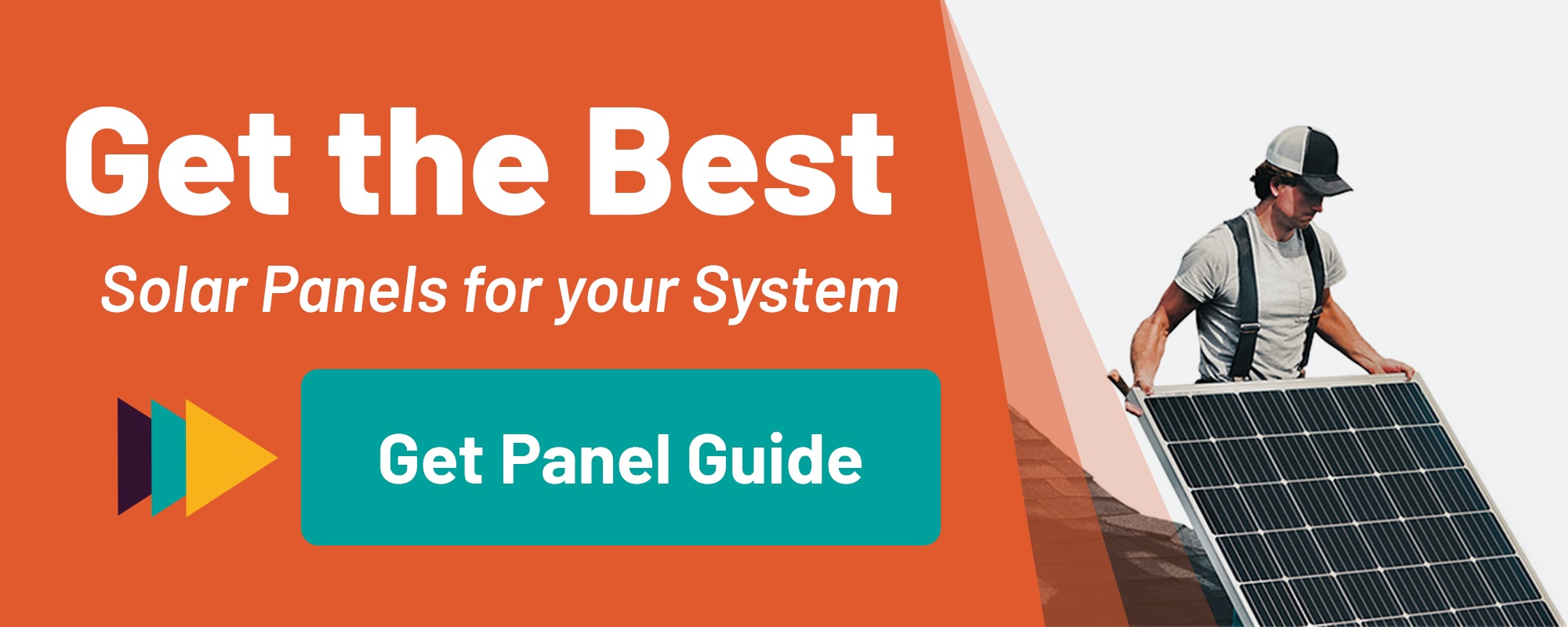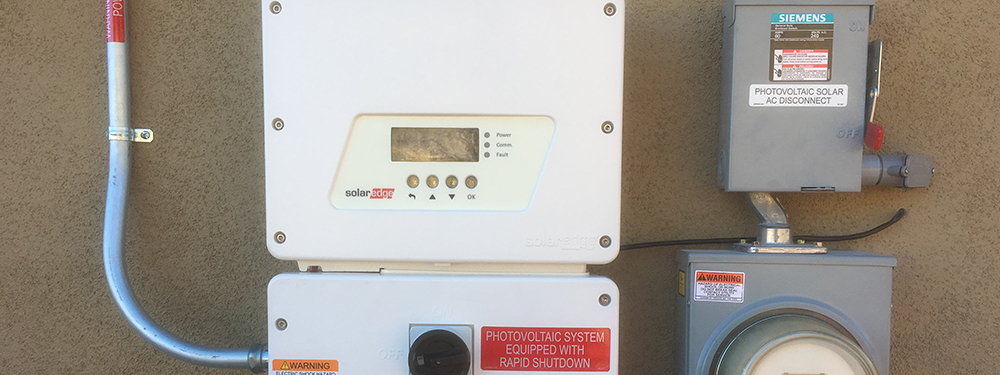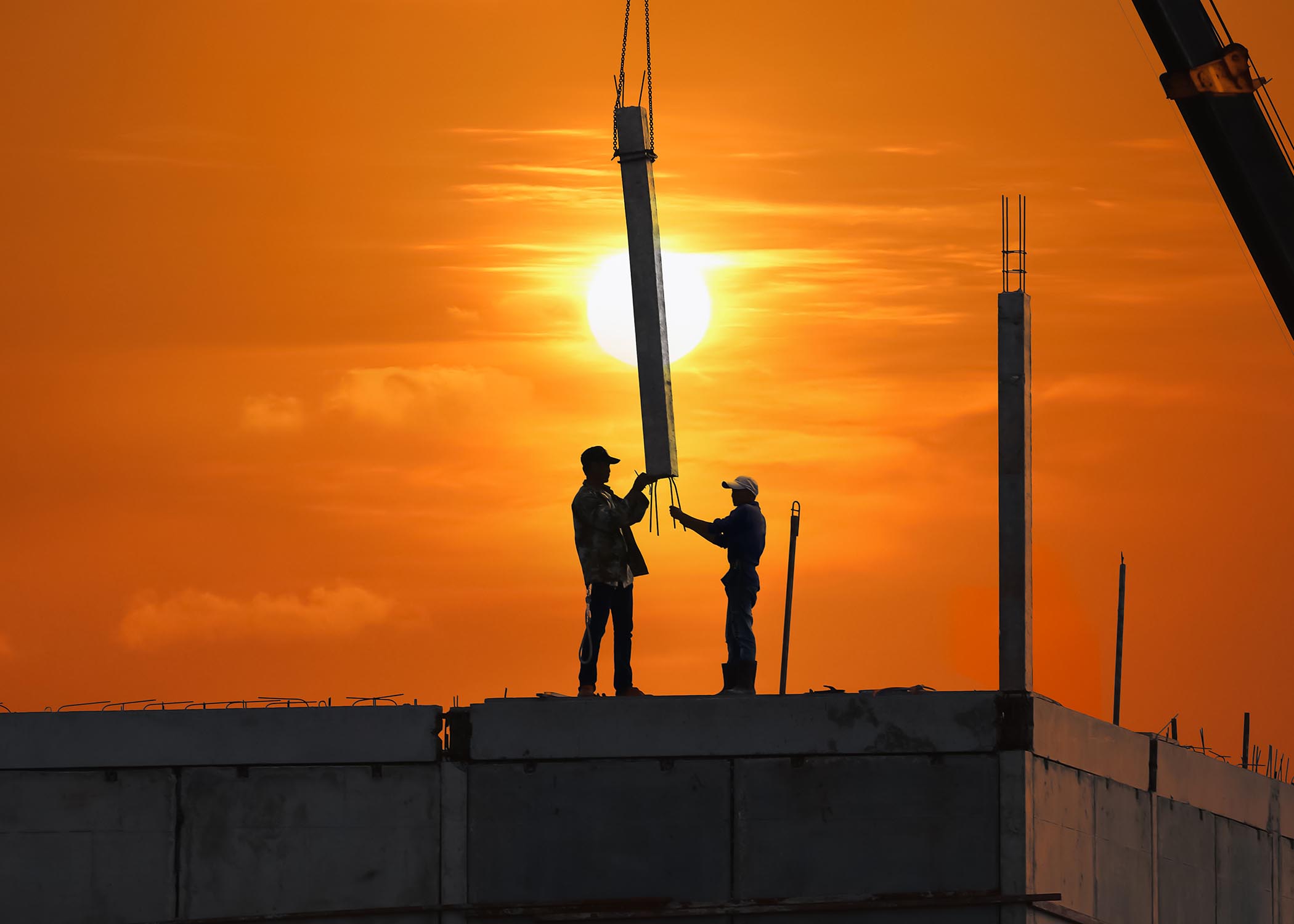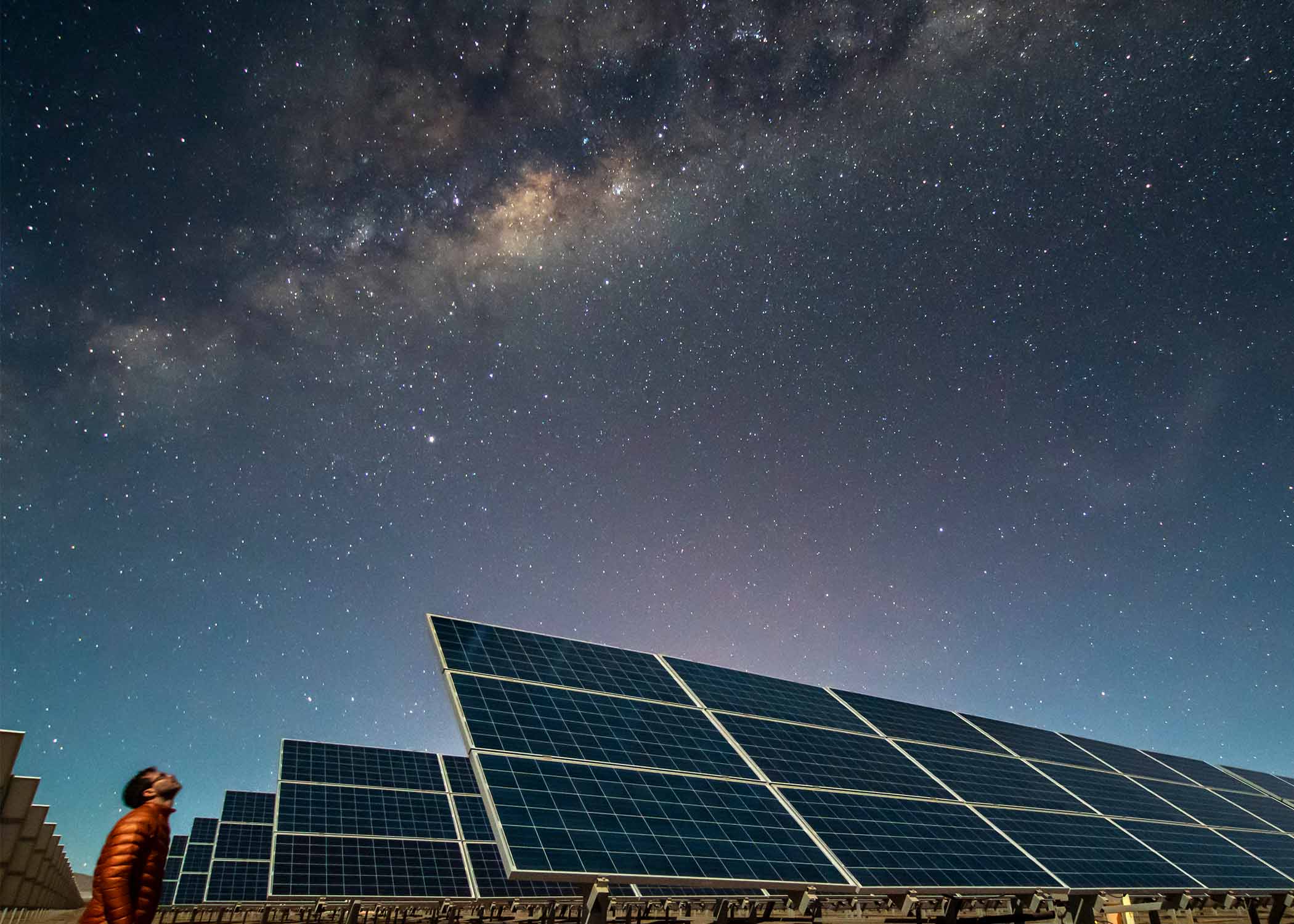Why Are Solar Panels So Expensive?
Large solar installers mark up their quotes to 2-3x the cost of equipment, turning a $10,000 system into a $30,000 project. You can save money by hiring a local contractor for much less (or even installing it yourself), turning your system into a sound long-term investment.
Over the long term, solar energy is the cheapest way to power your property. But it requires a significant up-front investment that slowly pays back over time.
Everyone loves the idea of saving money on energy bills. But when someone puts a quote in your hands for a system that costs more than a new car, you might start to have your doubts…
“Seriously, why are solar panels so expensive?”
We get this question all the time. Here’s our explanation:
1. Huge Markup on Turnkey Installations
Did you get a quote from a full-service solar company that installs their own equipment? If so, they’re probably marking up installation costs like crazy – as much as double the cost of materials. You can save a good chunk of money by installing it yourself or hiring an independent contractor for less.
2. 26% Federal Tax Credit
You get a 26% federal tax credit for going solar. Just know that whatever you pay, you’ll deduct 26% of the cost of your system and installation from your taxes. (Heads up; the tax credit is being phased out by 2024.)
3. Solar is an Investment
The initial cost of solar is high, but the money you save on electric bills pays for the system over time. The amount of time it takes you to break even is known as the payback period.
This is a significant concept for anyone trying to understand why solar is a smart investment. Watch this video to learn how to calculate
4. It’s Fine to Start Small
You can always start small and cover part of your energy needs, then expand as your budget allows.
It’s hard to give a conclusive answer, since this is such an open-ended question. But we hear it most often from people who have quotes out with a turnkey installer.
A system that costs about $10,000 in materials, like this 7.56kW grid-tied system, might be marked up to $30,000 after installation costs from a turnkey provider.
Which explains why sticker shock is a common phenomenon in this industry.
So here’s our advice: the best way to save money on solar is to install it yourself, or hire an independent contractor to complete the installation at a fraction of what a turnkey provider would charge you.
If the up-front cost is still a concern, the next solution would be to scale back to a more modest system design and then expand on it as your budget allows.
Don’t Overpay for Installation
Most of the time when someone asks us why solar panels cost so much, they’re working from a quote from a turnkey installer (a company that offers an all-in-one solution to source the equipment and perform the installation).
Here’s the trick: the cost of equipment is pretty much the same wherever you go. The markup is in the installation.
Large installers have overhead costs. They have to cover labor, pay rent on their office, maintain a fleet of service vehicles, supply equipment, take out insurance, and so on…
All those operating costs get rolled into the charge of installation.
And the markup is obscene.
A typical installation might take a team of 3 laborers a full 8-hour day to complete. At $25/hr, that’s $600 in total labor costs. Add a bit more for tools and overhead, and the installer might spend about $1000 to send a crew to complete the job.
And yet…turnkey installers charge 1-2 times the cost of equipment to install it. If your equipment costs $10k, your final bill may come out to $20-30k once everything is bundled together.
Uh huh. You can see why we’re such strong advocates for DIY solar.
If you’re holding a quote from a turnkey installer, we strongly recommend you explore DIY as an option. Installing a solar system can seem scary, but it’s a lot easier than it looks.
We’ve helped thousands of people through the DIY installation process – take a look at the customer galleries in our Install of the Month feature for inspiration.
Don’t feel comfortable installing your own solar system? There’s a nice middle ground between DIY and turnkey: buy the system direct, then hire an independent contractor to install it.
Independent contractors tend to charge way less for installation. They should charge you 75 cents to a dollar per watt, which means you’d pay $5-6k to install the same system we used as an example above. You can see the value comparison of all three options in the chart below.
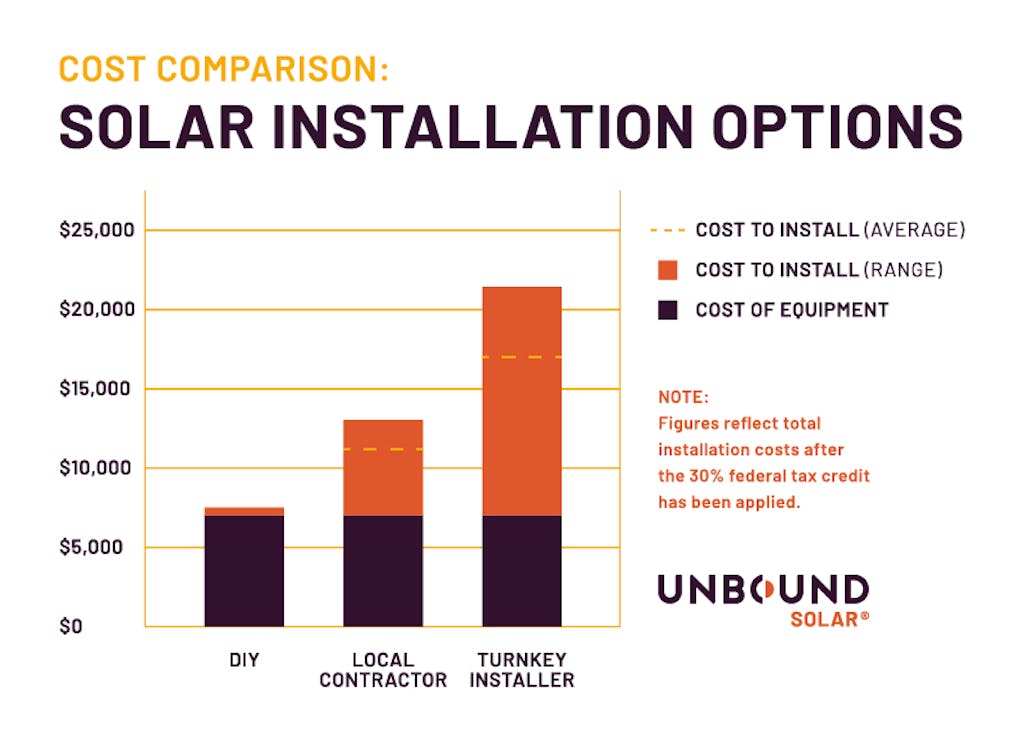
This is not to say that we fault turnkey installers for what they do. If you have a family or a demanding job, time is likely your most valuable resource. A turnkey solution is absolutely worth it if you can afford it and don’t have time to design your system yourself.
Just know you’re paying a premium for them to install the system, and that premium is awfully steep.
26% Federal Tax Credit Makes Solar More Affordable
If you live in the United States and choose to go solar, your system is eligible for a federal tax credit.
Today, that credit is 26% of your cost to go solar (which includes the cost of installation and equipment). However, it will shrink over time to 22% in 2023, disappearing completely by the end of 2024.
The tax credit is a reduction of the income tax you owe. For example, if you spend $10,000 on your system, you owe $2,600 less in taxes the following year.
If solar seems too expensive, keep in mind that 26% of your system cost will be refunded when tax season comes. However, that benefit will be phased out over the next few years. So if you want to claim the extra kickback on your taxes, you’ll have to do so sooner rather than later.
Read more: The Federal Solar Tax Credit, Explained in Plain English
Understanding Payback Period
Even if you skip the installer, you’ll still spend a good amount of money on the system itself. That number can be a little bit scary without any context.
It’s important to think of solar as an investment with a payback period.
Solar saves you money in the long run by reducing or eliminating electric bills. Over time, the money you save on electricity adds up.
Your payback period is the amount of time it takes for your energy savings to pay off the up-front cost of the system. (Other factors, like tax incentives, also speed up your payback period.)
The formula for payback period is:
System Price ÷ Value of Electricity ÷ Annual Usage = Payback period (years)
(This is a simplified formula. It doesn’t take into account certain factors like energy cost inflation, which increases costs by about 3% per year, or the scheduled replacement of smaller parts, like the inverter.)
The system may be pricey up front, but it will provide more than enough energy to pay for itself. For example, panels are warrantied for 25 years, but our sample 6.6kW system may pay for itself after about 8 years of typical use. The final 17 years of ownership yields profit off your investment.
Learn more about how to calculate payback period and return on investment for your solar system.
Start Small To Trim The Cost Of Solar
You don’t have to offset 100% of your energy costs if your budget doesn’t allow for it. It’s always possible to start with a modest system and then expand later.
You can start as small as one solar panel and a single micro-inverter. Solar panels and micro-inverters are a 1-to-1 system, meaning each panel is connected to its own micro-inverter.
See it: Enphase IQ7+ micro-inverters
This configuration can be expanded indefinitely. We build modest systems like this all the time for people who want to offset a small portion of their energy, then add to it over time as budget allows.
If you want to take this approach, be sure to mention your expansion plans to your system designer / sales tech. Not all inverters and panels are compatible. Start with a long-term plan in mind and plan appropriately.
Conclusion
Solar can be expensive in the short term, but the incentives will save you plenty of money over the life of the warranty. And the return on investment improves dramatically if you skip the turnkey provider and install it yourself – or at least hire an independent contractor to do it for you.
Trying to figure out whether solar is right for you? Take a look at our guide to getting started with solar. It’s tailored for people who are just starting to research the solar energy landscape.
